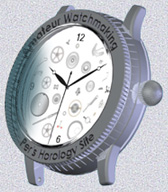 |
The
Keyless works |
|
|
|
|
|
The keyless works is a
rather strange name for one of the basic functions of the movement. The
name indicates that there are key works as well! In the old days the
pocket watches were wound by a key and the same key was used for setting
the time, or hands. A clever invention by
Patek Philippe in 1841
enabled one
button to have the double function of both winding and setting the
watch.
The
double function is achieved in a very clever way by letting a clutch
wheel slide back and forth on the winding stem. The stem is square at
the portion where the clutch wheel slides so the clutch wheel will turn
when the stem is turned.
|
|
|
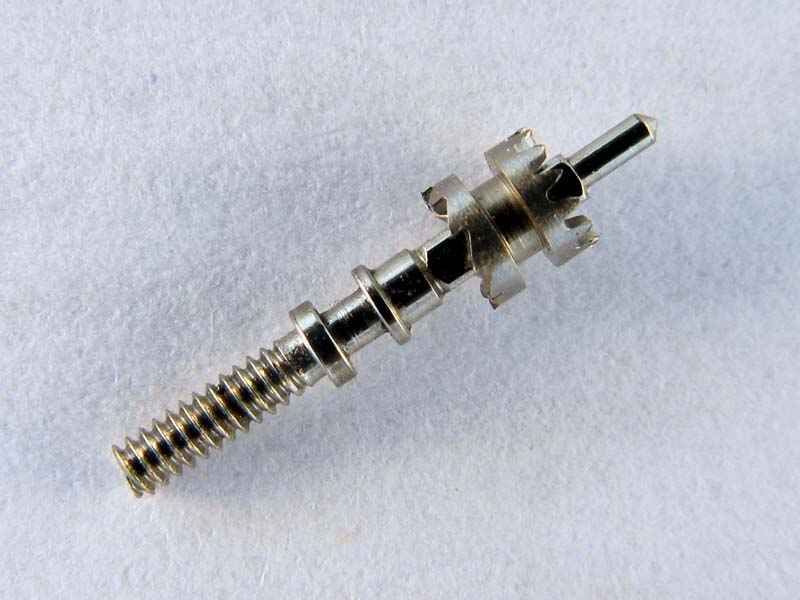 |
|
|
Here the Clutch Wheel (407) is in place at
the square portion of Winding Stem. The Clutch Wheel can be shifted
between two detent positions, winding and setting, by the Clutch Lever
(435) |
|
|
1) Winding
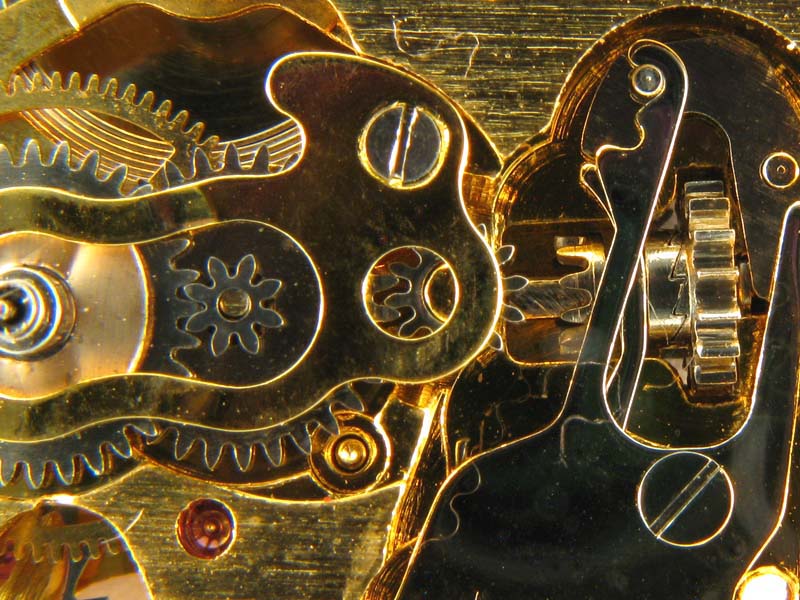 |
|
|
A view where the
interaction between the Clutch Wheel (407) and
the Winding Pinion (410) can be seen. The place of the Clutch
Wheel in this case is in the winding position i.e. the Clutch Wheel
engages the Winding Pinion through their Breguet (ratchet) teeth. Top
right in the picture the detent function can be seen. An arm, called
Detent Spring, made out from the Set Bridge (445) has two detent notches,
in this case the when the movement is set in the winding position the
Set Lever (443) is kept in the upper detent notch. The Clutch Lever
(435) can be seen right below the Detent Spring. |
|
|
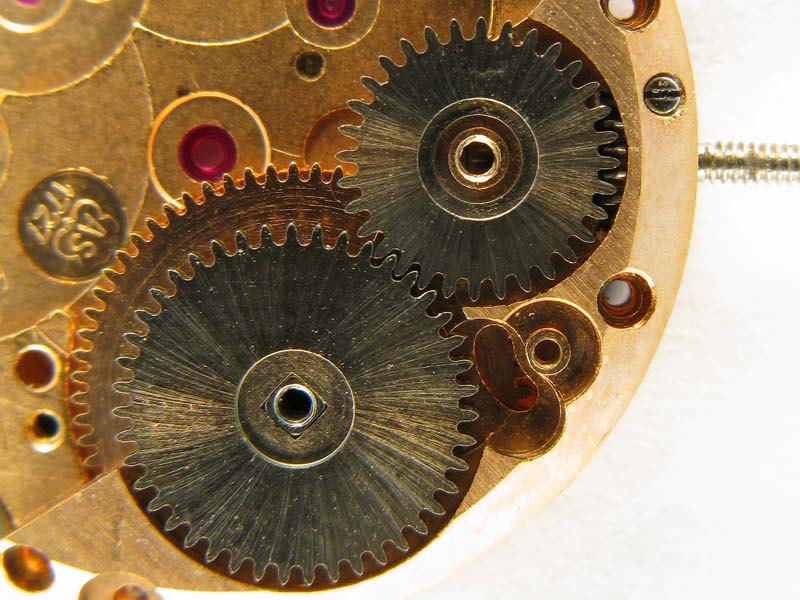 |
|
|
The rotation of
the Winding Stem is transferred via the Clutch Wheel to the Winding
Pinion, which in turn drives the Crown Wheel, see figure top right. The
Crown Wheel (420) engages the Ratchet Wheel (415) which is fixed to the
Barrel Arbor (195) by a square mount. When the Stem is rotated the
Mainspring will be wound through this wheel and pinion chain.
Back
|
|
|
2)
Setting
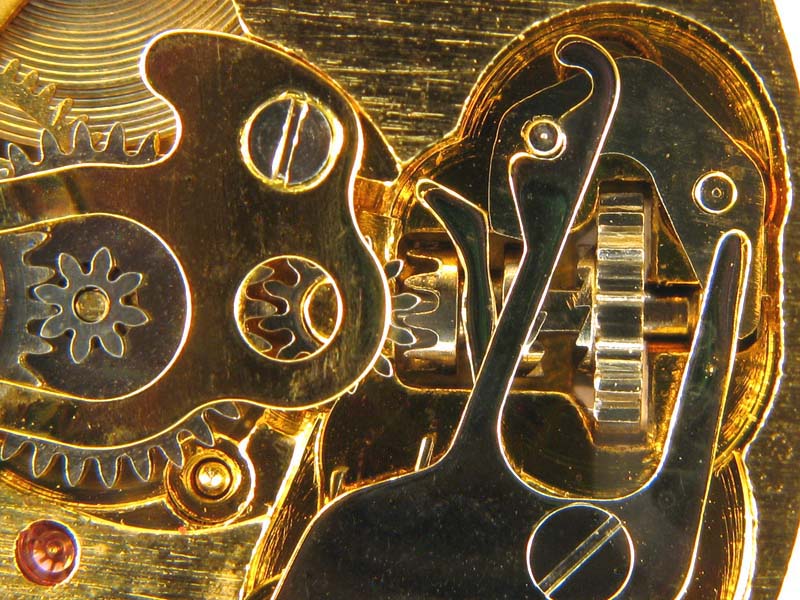 |
|
|
In the hand setting
position, with the winding button pulled out, the Set Lever (443) gives
the Clutch Lever a force, which in turn pushes the Clutch Wheel to the
left. This movement disengages the Clutch Wheel from the Winding
Pinion and instead engages the Set Wheel, see the center in figure
above.
The Set Lever is
fixed in this position by the detent post being moved to the lower
detent slot in the Detent Spring.
|
|
|
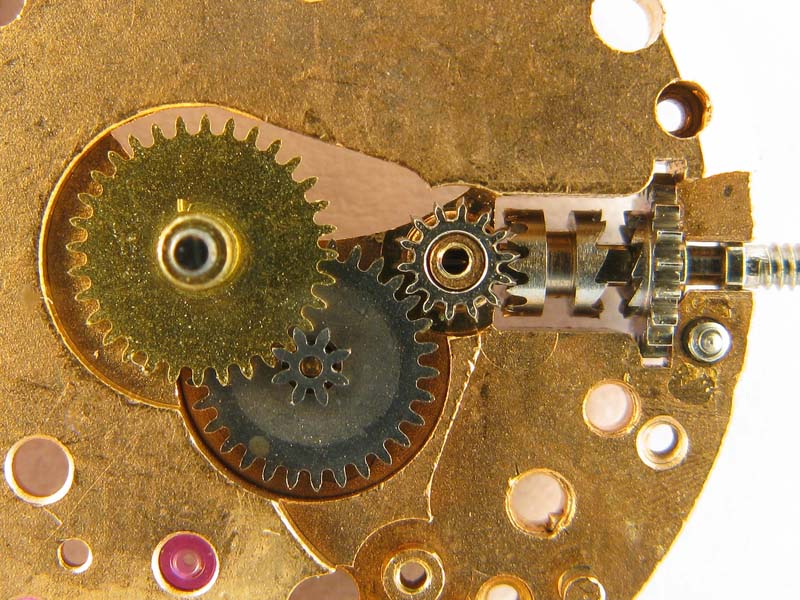 |
|
|
Turning the
winding button in this set position gives the Set Wheel a rotation,
which is transferred to the Minute Wheel which causes the hands to move.
In figure you can see how the Clutch Wheel engages the Minute Wheel.
Back |
|
|
|
|
|
|
|
|
|




